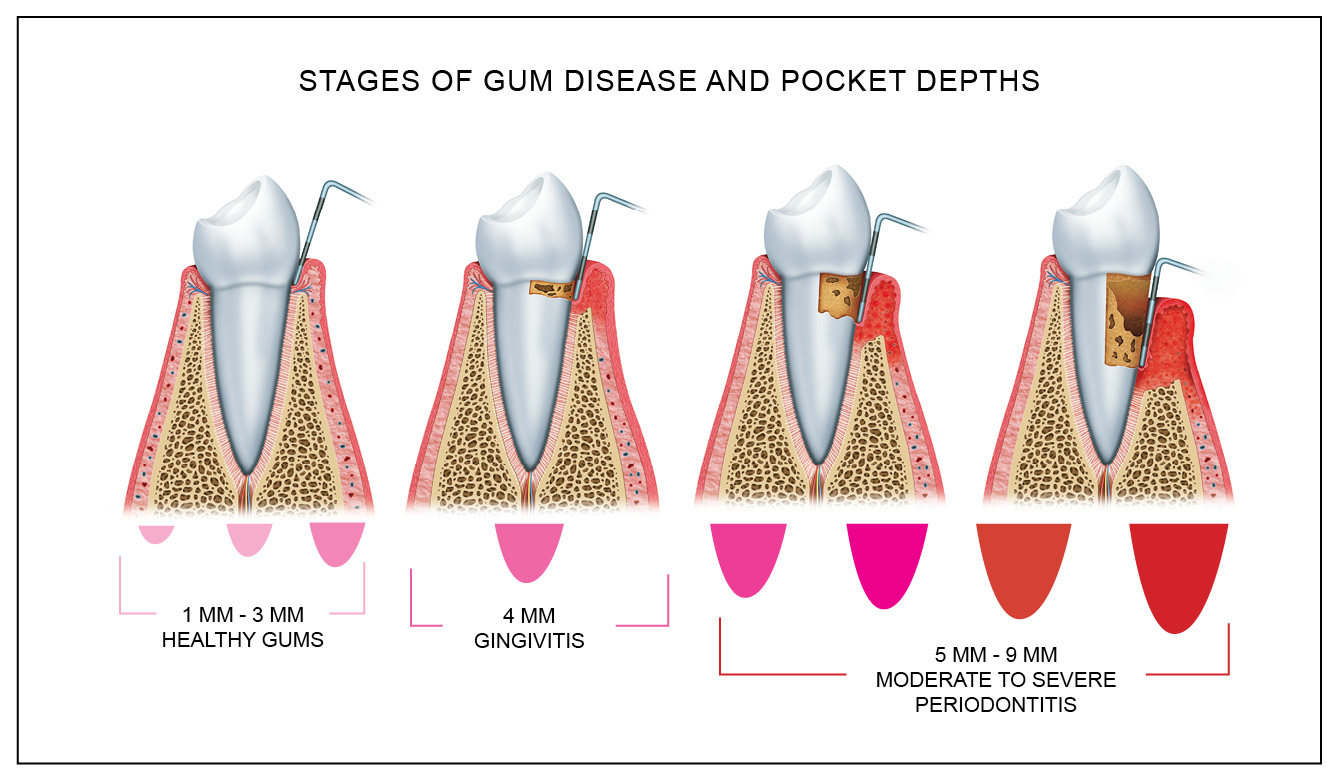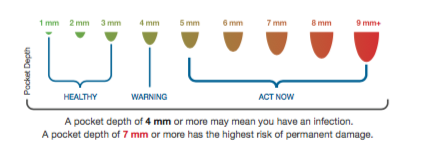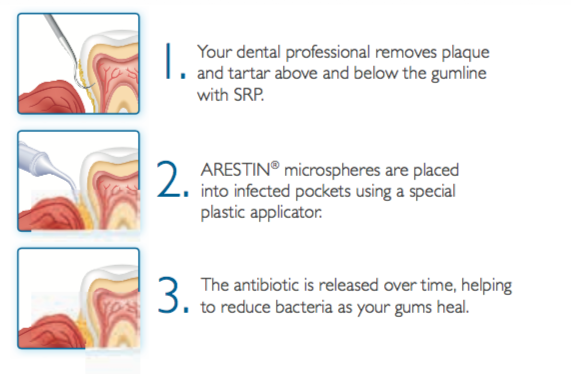 Deep Teeth Cleaning
Deep Teeth Cleaning
SRP + Arestin
The initial stage of treatment for periodontal disease is usually a thorough cleaning that may include scaling or root planing. The objective of these non-surgical procedures is to remove etiologic agents such as dental plaque and tartar, or calculus, which cause gingival inflammation and disease. Scaling and root planing can be used as a stand-alone treatment, or a preventative measure. They are commonly performed on cases of gingivitis and moderate to severe periodontal disease.
What Do the Procedures Entail?
Dr. Yulia Nikoghosyan will only perform scaling and root planing after a thorough examination of the mouth, which may include taking x-rays and visually examining the mouth. Depending on the condition of the gums, the amount of tartar present, the depth of the pockets, and the progression of periodontitis, Dr. Yulia Nikoghosyan may recommend scaling and root planing. In some cases, a local anesthesia may be used during the procedure.
Scaling:
When scaling is performed, calculus and plaque that attaches to the tooth surfaces is removed. The process especially targets the area below the gum line, along the root. Scaling is performed with a special dental tool called an ultrasonic scaling tool. The scaling tool usually includes an irrigation process that can be used to deliver an antimicrobial agent below the gums to help reduce oral bacteria.
Root Planing:
Root planing is performed in order to remove cementum and surface dentin that is embedded with unwanted microorganisms, toxins and tartar. The root of the tooth is literally smoothed, which promotes healing, and also helps prevent bacteria from easily colonizing in the future.
Antibiotics or irrigation with anti-microbials (chemical agents or mouth rinses) may be recommended to help control the growth of bacteria that create toxins and cause periodontitis. In some cases, Dr. Yulia Nikoghosyan may place antibiotic fibers in the periodontal pockets after scaling and planing. This may be done to control infection and to encourage normal healing.
When deep pockets between teeth and gums are present, it is difficult for Dr. Yulia Nikoghosyan to thoroughly remove plaque and tartar. Patients can seldom, if ever, keep these pockets clean and free of plaque. Consequently, surgery may be needed to restore periodontal health.
Regular brushing and flossing are essential parts of oral home care.
But gum disease won’t go away on its own. Because it’s an infection, it needs to be treated professionally with an antibiotic in combination with scaling and root planing (SRP).
And the longer you wait, the greater the chance you may need painful and expensive surgery.
So don’t ignore your dental professional’s advice to treat the infection in its early stages. Treat it head-on with ARESTIN® (minocycline HCl) Microspheres, 1 mg.
Confront your gum disease with an antibiotic treatment.
ARESTIN® is a locally administered antibiotic (LAA) in powder form that your dentist places directly into the infected areas—or pockets—in your gums. It’s part of a combined treatment with SRP.
ARESTIN® powder is made up of 100,000 tiny microspheres, invisible to the eye. These microspheres contain the antibiotic drug minocycline, which is released over time into the infected pocket. This means ARESTIN® keeps working to kill bacteria long after you’ve left the dental chair.
INDICATION
ARESTIN® (minocycline HCl) Microspheres, 1 mg is indicated as an adjunct
to scaling and root planing (SRP) procedures for reduction of pocket depth in patients with adult periodontitis. ARESTIN® may be used as part of a periodontal maintenance program, which includes good oral hygiene and SRP.
IMPORTANT SAFETY INFORMATION
ARESTIN® should not be used in any patient who has a known sensitivity to minocycline or tetracyclines. The use of drugs of the tetracycline class during tooth development may cause permanent discoloration of the teeth, and therefore should not be used in children or in pregnant or nursing women. Hypersensitivity reactions that included, but were not limited to, anaphylaxis, angioneurotic edema, urticaria,
 Gum disease creates pockets between the teeth and gums.
Gum disease creates pockets between the teeth and gums.
Gum disease can cause bad breath, bleeding, swelling, and infected or tender gums, as well as other symptoms. Additionally, the infected gum starts to separate from the tooth.
Find out how your pockets measure up.

ARESTIN® + SRP kills bacteria that SRP alone can’t reach.
Scaling and root planing (SRP) removes much of the plaque and tartar above and below your gumline, where bacteria produce toxins that irritate your gums and cause infections. But SRP alone is often not enough.
Adding ARESTIN® (minocycline HCl) Microspheres, 1 mg helps kill bacteria that SRP can’t reach.
ARESTIN® is proven to help:
• Reduce pocket depth compared with SRP alone
• Kill bacteria that cause gum disease
How ARESTIN® + SRP works:

After your ARESTIN® treatment:
- Wait at least 10 days before using floss, toothpicks, or other devices designed to clean between teeth in treated areas
- Don’t touch treated areas for 1 week
- Avoid eating hard, crunchy, or sticky foods for 1 week
Benefits of Treatment
If treatment is successful, scaling and planing may have many periodontal benefits. One is that it can help prevent disease. Research has proven that bacteria from periodontal infections can travel through the blood stream and affect other areas of the body, sometimes causing heart and respiratory diseases. Scaling and root planing remove bacteria that cause these conditions.
Another benefit of treatment is protecting teeth against tooth loss. When gum pockets exceed 3mm in depth, the risk for periodontal disease increases. As pockets deepen, more bacteria are able to colonize, eventually causing a chronic inflammatory response by the body to destroy gingival and bone tissue. This leads to tooth loss.
Finally, scaling and root planing may make the mouth more aesthetically pleasing, and should reduce bad breath caused from food particles and bacteria in the oral cavity. Superficial stains on the teeth will be removed during scaling and planing, adding an extra bonus to the procedures.
